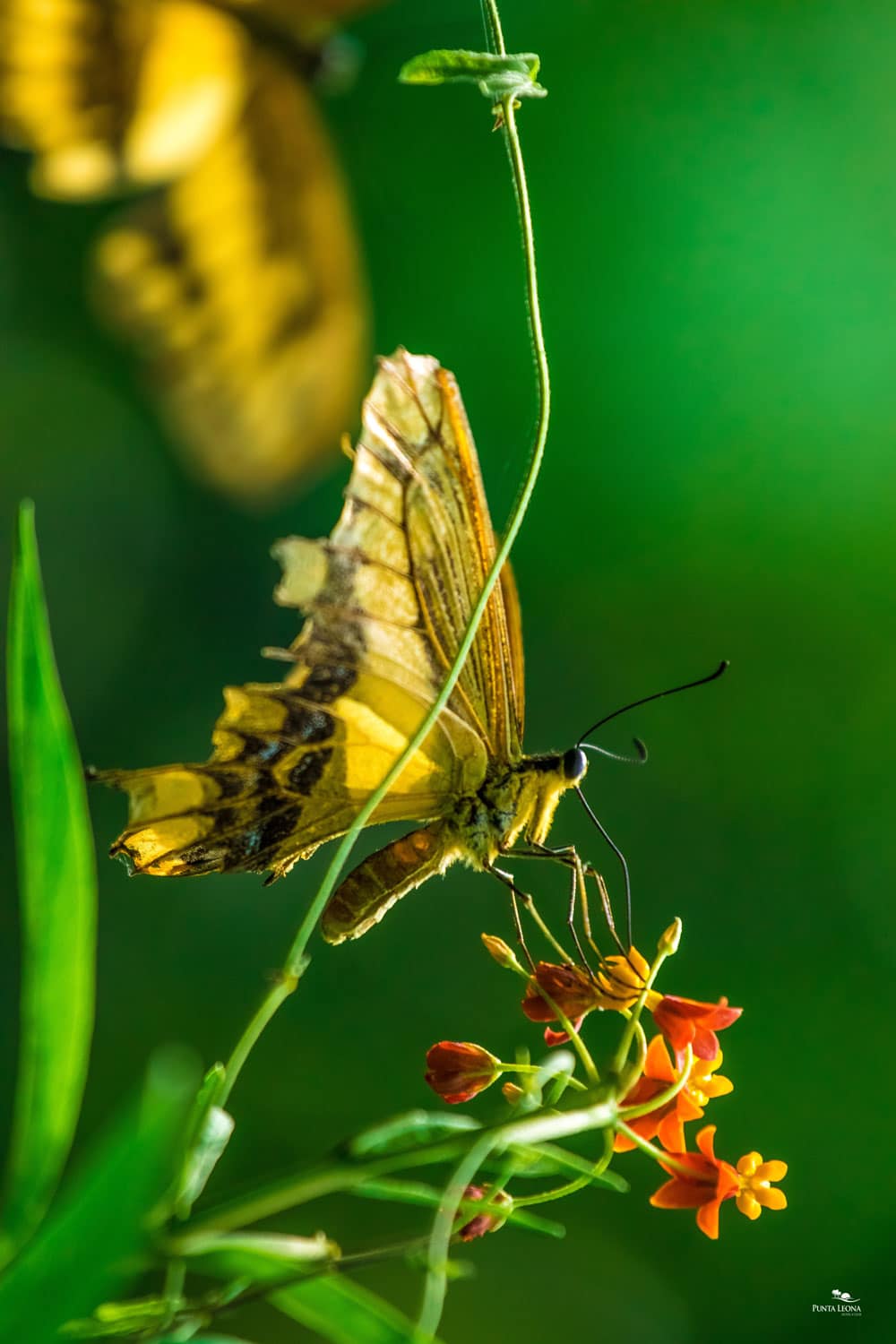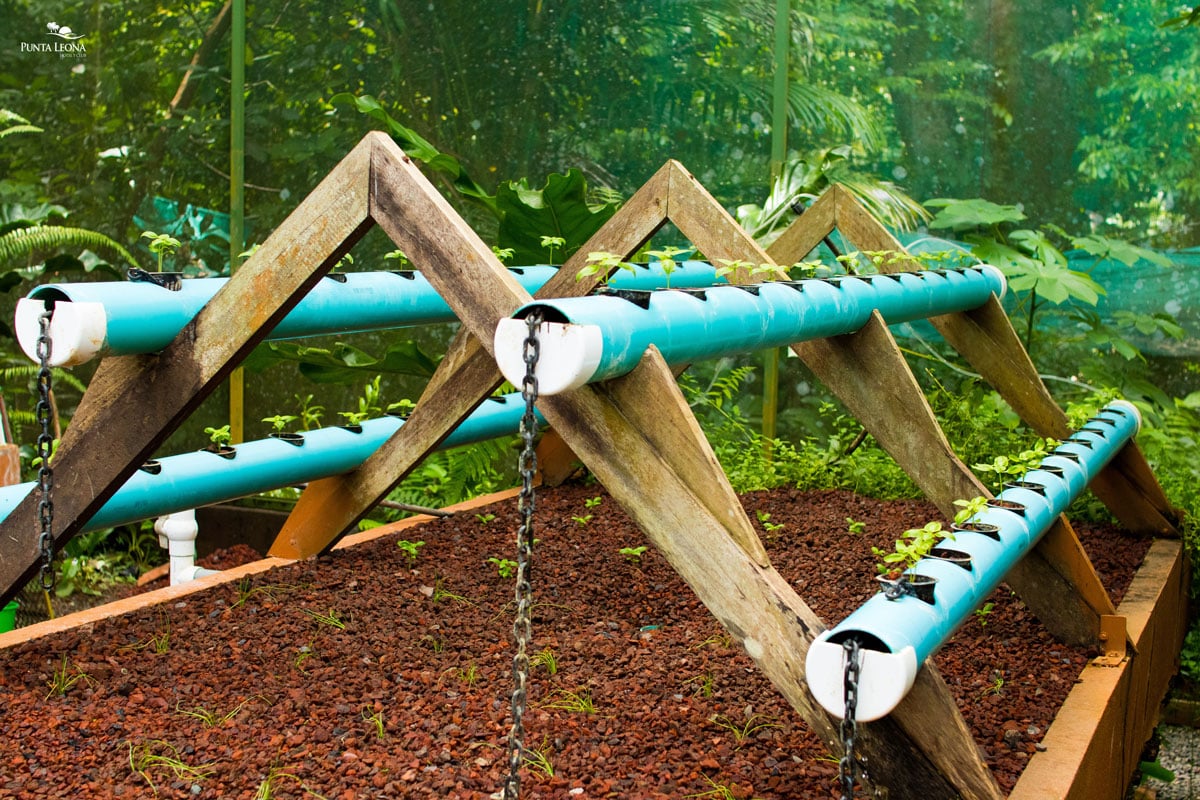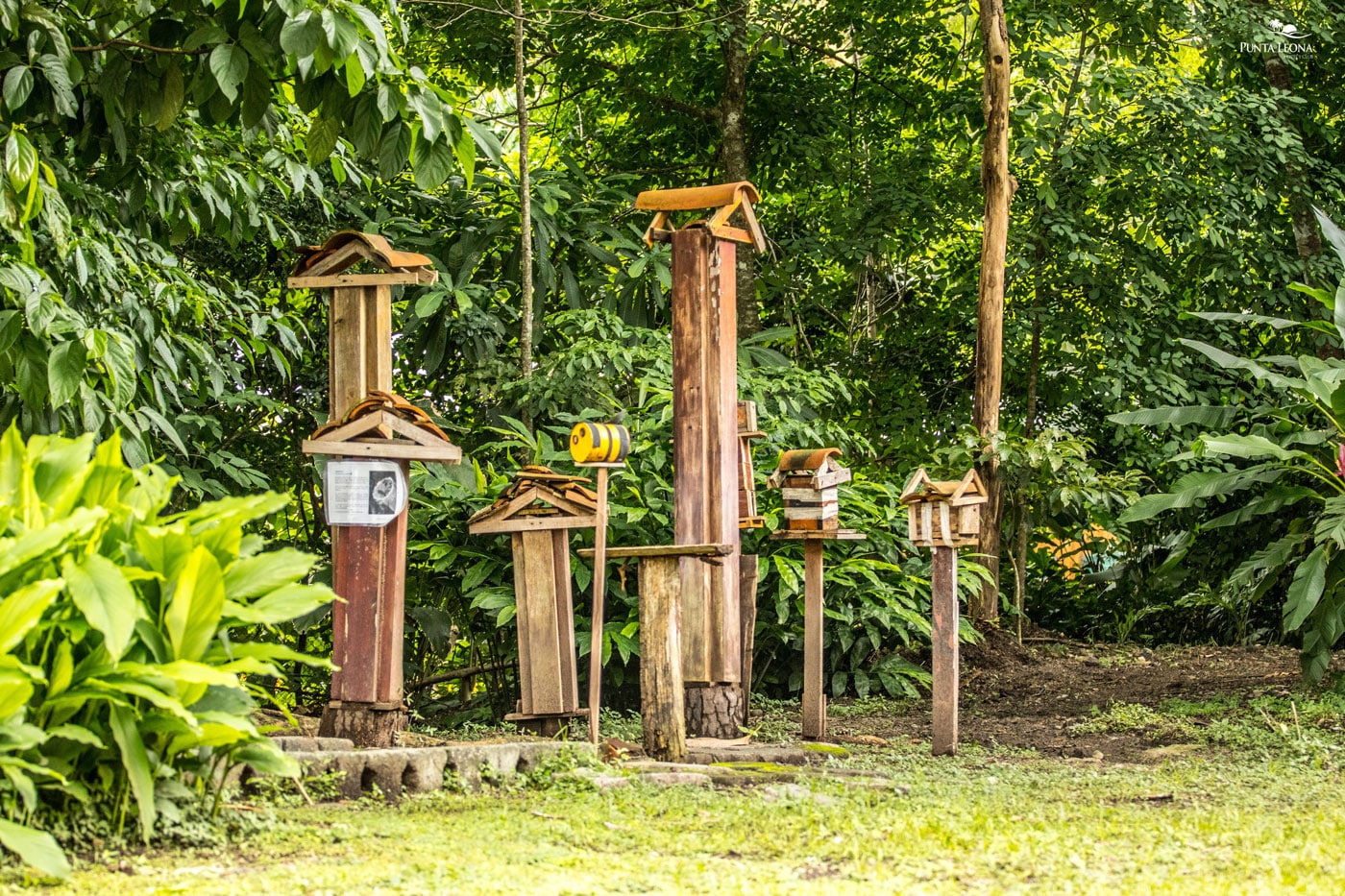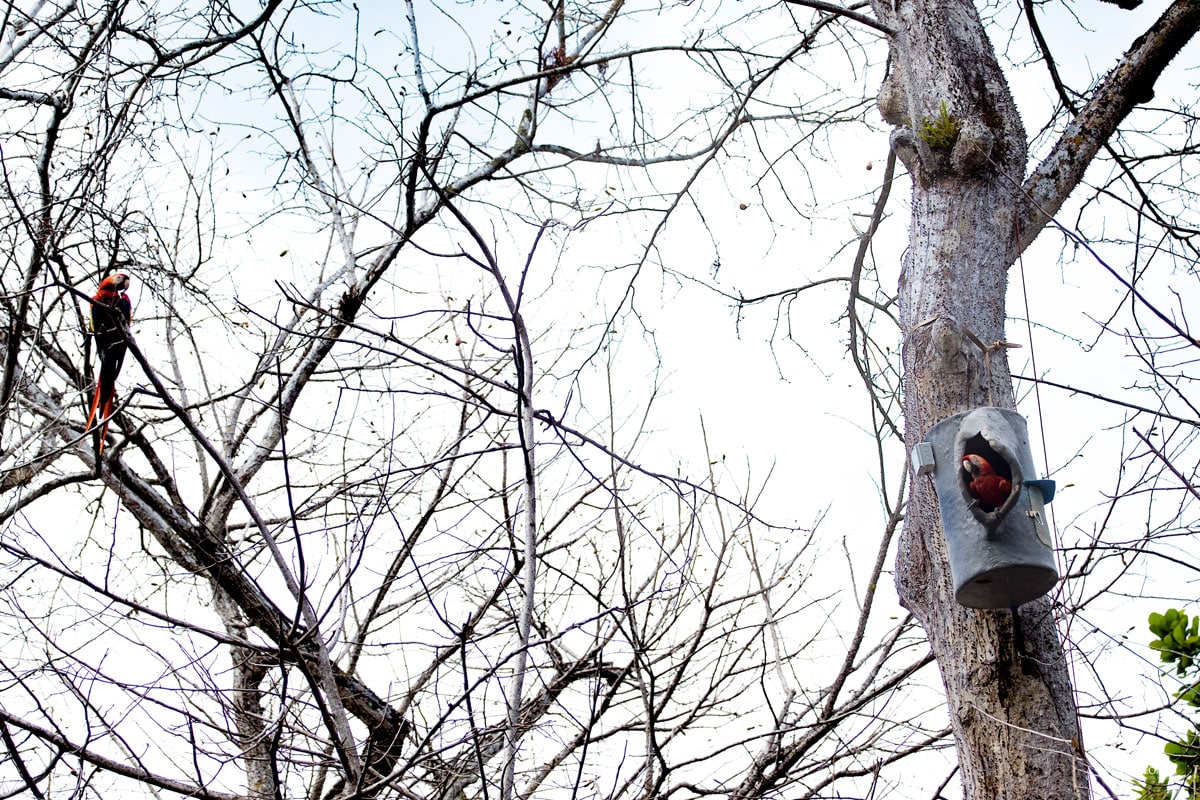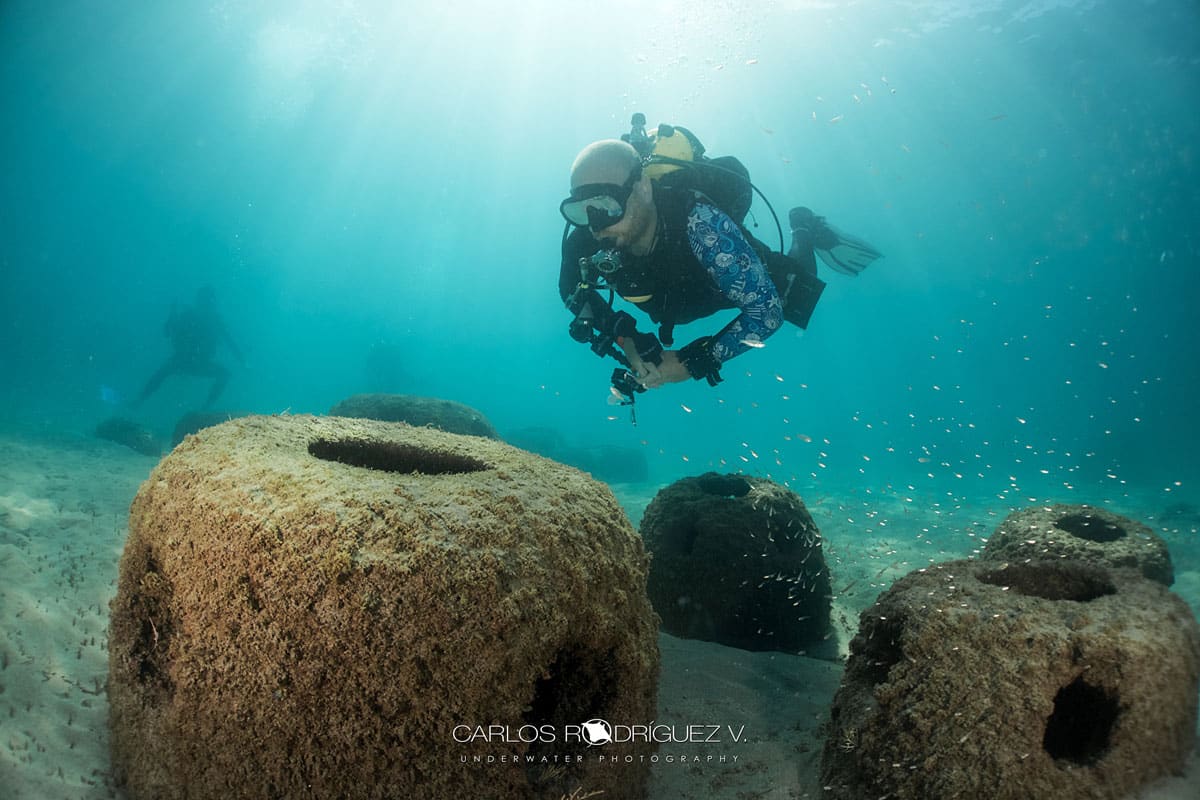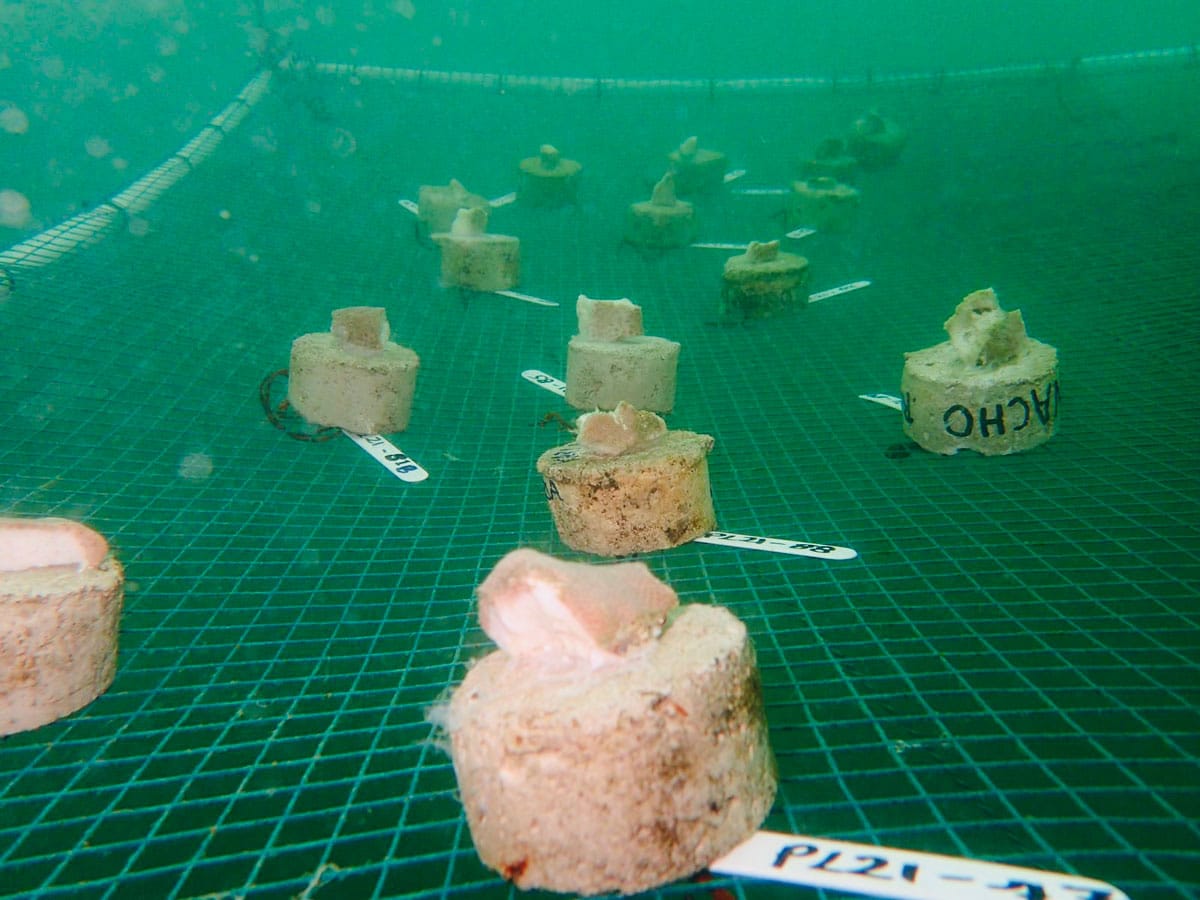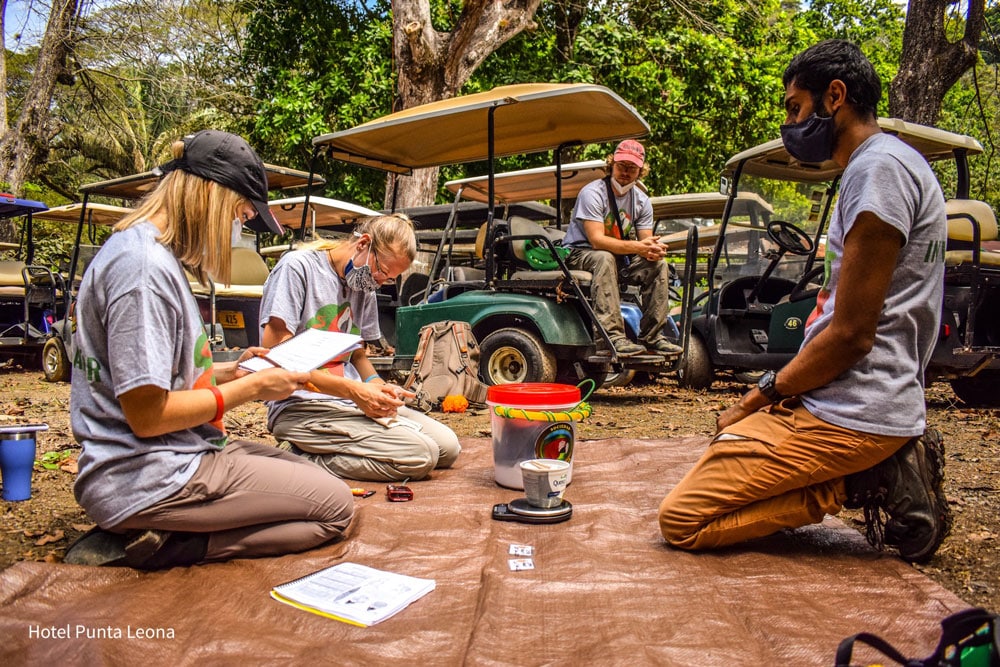Natural Lab
Caligo telamonius, Morpho Helenor, Adelpha cocala, Battus polydamas, Eueides isabella, Yionis Jumm, Heliconius hecale, Heraclides thoas, Heliconius charitonia, Dryas iulia, Glutophrissa drucilla.
In order to encourage the conservation and knowledge of the diversity of native bees in the country, Punta Leona has installed some "Hotels for Bees"; which house hundreds of "mariolas" bees, a species of tiny stingless bees that produce small amounts of a honey. The honey from these bee has healing properties and is used mainly for the treatment of wounds and burns.
On the planet there are about 20,000 species of bees, most of them are solitary; that is, they are not grouped into colonies. The structures we place serve as hosts for this type of bee, whose main function is to pollinate plants and make honey.
Eighty percent of wild and domestic plants are pollinated by insects, mostly bees. Some factors such as the decline of habitat, the introduction of exotic species, the use of pesticides and climate change affect not only native bees but humans as well. With this project we want our visitors to learn how bees contribute to our beautiful and diverse gardens and why we have chosen to build a Bee Hotel.
Thanks to the initiative of Dr. Christopher Vaughan in Punta Leona we are pioneers in the conservation of scarlet macaws in the wild and not in captivity, as most of the programs present in other parts of the country do.
The artificial nests, which we highlight are made by former lapas from the area, are built with fiberglass, are located near a natural nest, in trees that are food sources and, with this, other nesting options are provided to the limpets. . Once the chick is ready, it leaves the nest. He moves to the mangroves where his parents teach him what to eat. That is why our Conservation Program is with birds in the wild, otherwise the teaching process is lost,” Vaughan said.
Likewise, through the monitoring cameras in the artificial nests, researchers, schoolchildren and the community in general can observe a process that otherwise they could never study. The competition for nests, the incubation process that occurs between December and February, the birth of the chick and how it feeds, until it finally leaves the nest.
Experts have stated that in recent years the productivity of rocky areas has suffered changes due to climate change, sediment movement or overexploitation by fishing resources.
Therefore, the bell-type reefs that we have put in Playa Blanca become a step towards recovery, because they create shelters, increase the availability of the substrate for the fixation of algae, small mollusks and crustaceans, which serve as food for many species marine and allows to keep the ecosystem healthy.
This is the first project of this type that is placed in the country, whose monitoring, studies and investigations served as the basis for creating the National Protocol for Artificial Reefs.
Therefore, the study of the impact of the use of regenerative reefs in a protected system such as Punta Leona, becomes a good laboratory to be able to carry out a study that allows knowing in detail the benefits of the use of this type of reef. artificial reef.
The results have been very encouraging, as marine life has rapidly prospered around the reefs, becoming a place that provides food, shelter and reproductive possibilities.
Our coral gardening project in Punta Leona is in its beginning stages. The goal is to recover areas of living coral within Playa Blanca and, if possible, replicate the project in other sites in the Gulf of Nicoya.
Currently we have some species identified as Porites lobata, Pavona clavus, Pavona gigantea and Pocillopora elegans.
In the first year, we have tried different planting techniques and monitoring which species grow faster and which ones adapt better to different environmental factors typical of the area, since we brought corals from the North Pacific as well as some local fragments.
For gardening, we use three types of structures made of PVC material, as well as nylon ropes, which are placed at a depth of about 4 meters, without touching the bottom, since a correct entry of light, temperature and currents is sought. with the aim that they have the best possible environment for their growth.
At present we place an antenna-type structure, another a clothesline and finally a platform. The first stage began in Limoncito beach, while the second is located in Blanca beach.
The Hotel and Club Punta Leona has been engaged for years in reforesting the canton of Garabito through its reforestation program that includes internal and external plantings, and donations. The objective of the Punta Leona Nursery is to supply the Reforestation Program throughout the year with native tree species, which serve as a home and food for wild animals, and carbon dioxide removal.
During the dry season of the year, the nursery keeps the trees with manual irrigation
small size so that when the rainy season arrives, from June to November, the day begins.
Annually an approximate survivor of 300 specimens is planted and up to 200
donations within the Adopt An Abol Program.
Among the representative species in the nursery are:
Icaco, Guaitil, Jacaranda, Corteza Morada, Sotacaballo, Guayaba , Casco de Venado, Madero Negro, Nance, Ceiba, Almendro de playa corteza amarilla, espavel, guapinol, fruta de pan, manzana de agua, cacao, roble sabana, Guava.
We are interested in disseminating and facilitating the obtaining of scientific knowledge to contribute to the conservation of nature and be part of the solutions to specific problems.
Punta Leona is a natural laboratory that has all the infrastructure facilities to generate knowledge. Our objective is to connect the scientific field with tourism, and thus combine the virtues of both environments for the benefit of environmental regeneration and the educational field.
Activities we carry out
- We participate in scientific research programs: academic activities, NGOs, state, to study a scientific problem in our reserve.
- Scientific explorations: We promote visits of a scientific nature to collect information of interest in the field being explored.
- Dissemination of scientific knowledge: We contribute to the dissemination of scientific knowledge through logistical cooperation to facilitate the dissemination of results.
- Observation of a particular species or event: We facilitate the first-person observation of an individual (student, scientist) on a species or event of scientific interest.
- Alliance with universities: We support scientific research from international universities such as James Madison University, Texas A&M, and national ones such as UCR, UNA, UNED.

